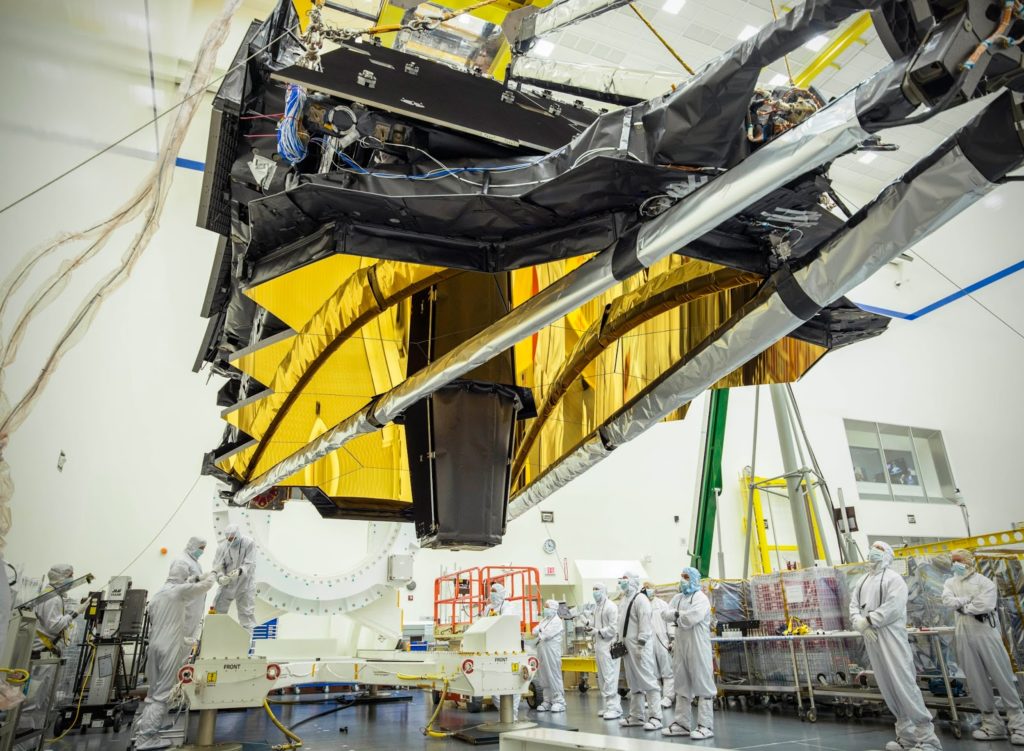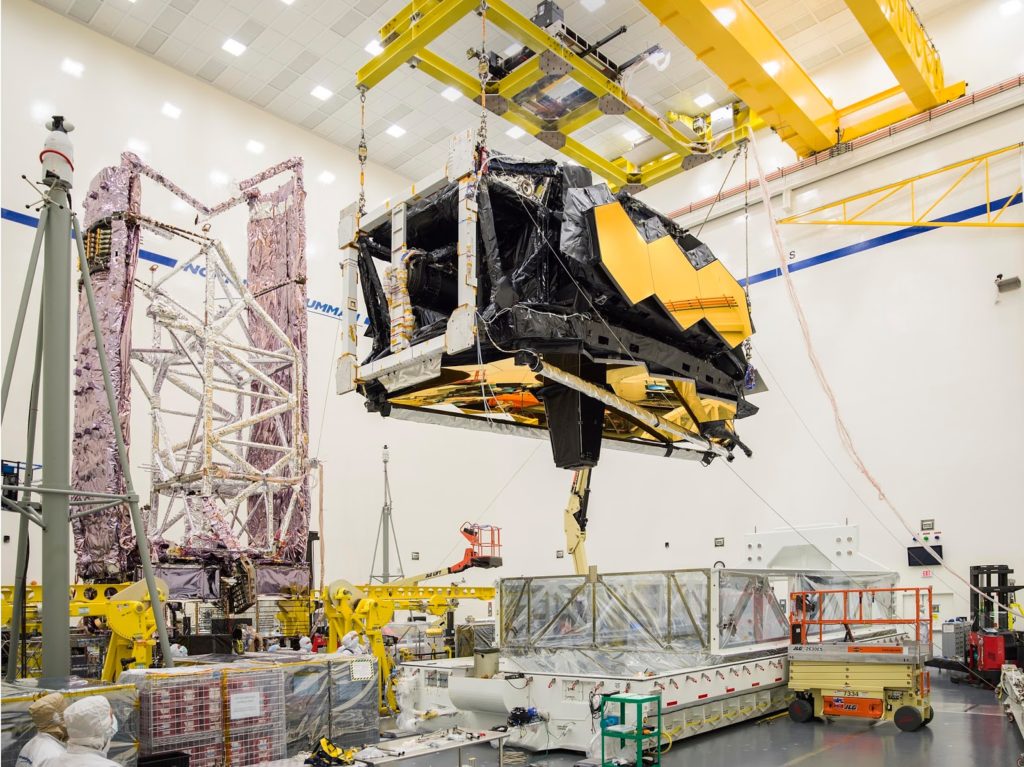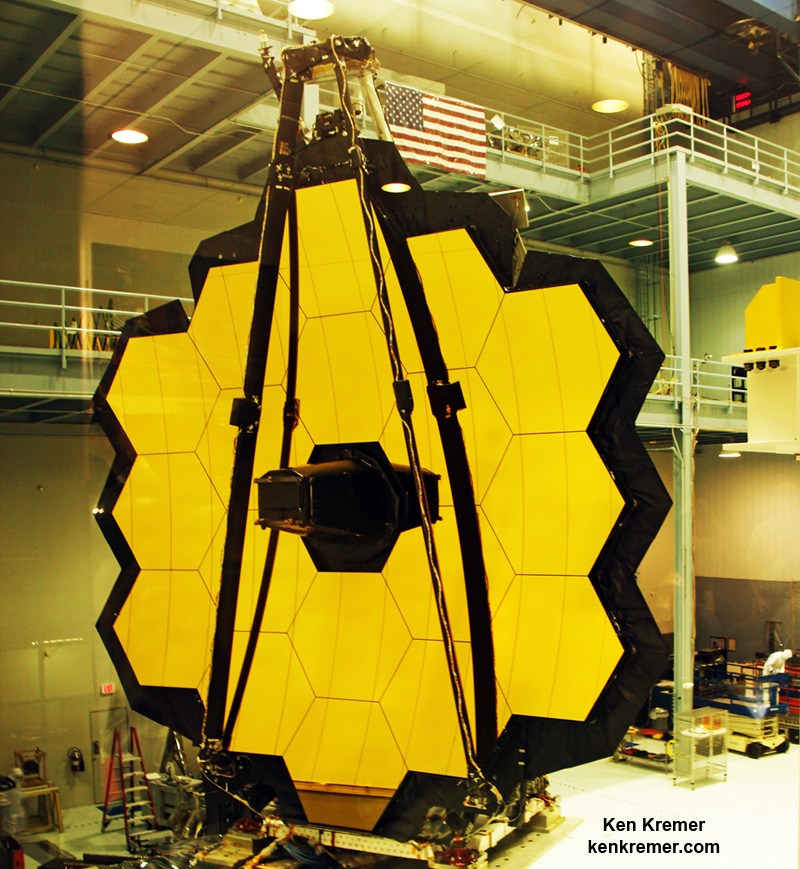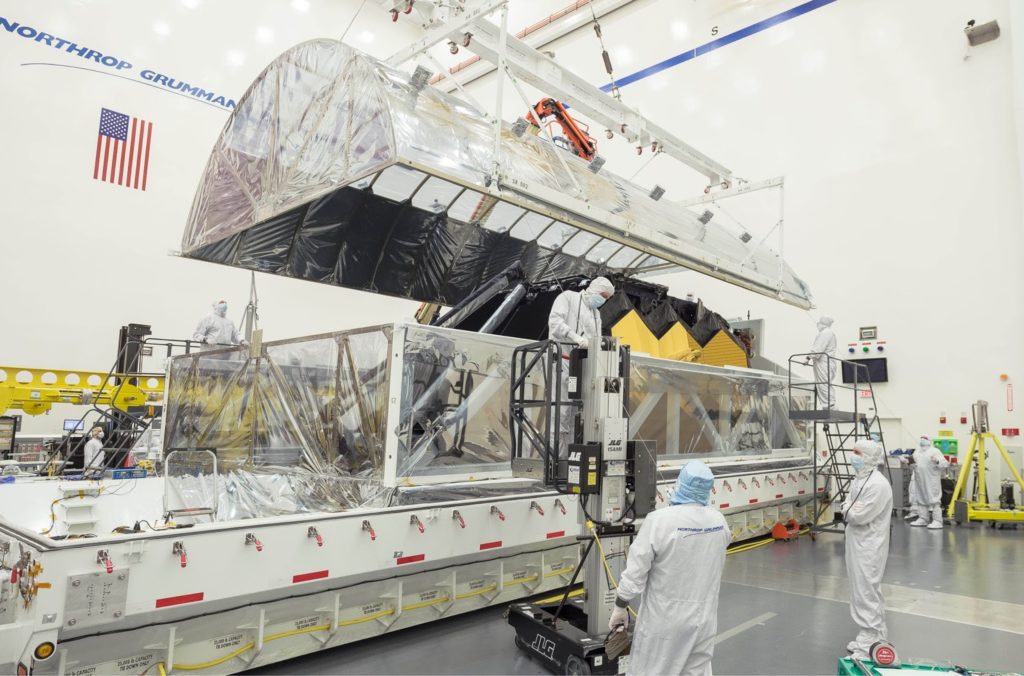Kremer — SpaceUpClose.com — 18
Mar 2018
Telescope (JWST) has begun final assembly and testing at the Northrup Grumman spacecraft integration facility in Redondo Beach, California
where the huge science instrument component and sunshield will be joined
together.
before the completed telescope is shipped to its launch site in Kourou, French Guiana.
the date has not yet been determined pending the outcome of the final assembly
and testing of the massive observatory at Northrup Grumman.
space telescope ever built. It will serve as the scientific successor to NASA’s
world famous and phenomenally successful Hubble
Space Telescope (HST).
like origami inside the nose cone.
The science module is comprised of the science
instruments, optical train, and the iconic and gigantic golden primary mirror measuring 6.5-meter
(21.3-foot) in diameter.
Webb is named OTIS which stands for optical telescope and integrated science
instrument module.
February after successfully completing 9 months of cryogenic testing at NASA’s
Johnson Space Center in Houston.
military C-5 Charlie aircraft that departed Ellington Field Joint Reserve Base,
just outside of Johnson to Los Angeles International Airport and then trucked
to Northrop Grumman.
from Texas to California packed inside the shipping container known as the Space
Telescope Transporter for Air, Road and Sea (STTARS).
halves of JWST now reside at Northrop Grumman Aerospace Systems in Redondo
Beach, California, where they will come together to form the complete
observatory after years of design, development, manufacturing and testing.
The science instrument module was assembled and
tested at NASA’s Goddard Space Flight Center in Greenbelt, Md, which this author
saw and reported on the fully open golden mirror first hand. It was then
shipped to Johnson for further cryogenic testing.
testing prior to launch has proven effective in ensuring that NASA’s missions
achieve their goals in space,” said Eric Smith, program director for Webb at
NASA Headquarters in Washington, D.C., in a statement.
testing phase and has seen great success with the telescope and science
instruments, which will deliver the spectacular results we anticipate.”
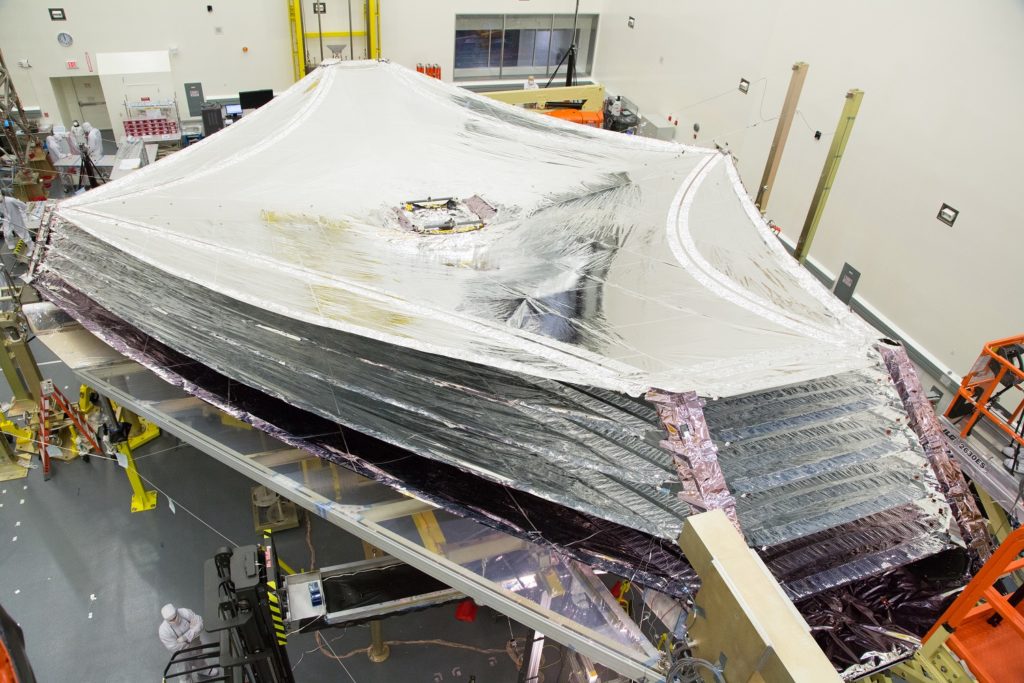 |
|
The
sunshield of NASA’s James Webb Space Telescope sits deployed inside a cleanroom at Northrop Grumman Aerospace Systems in Redondo Beach, California, in October 2017. Credits: Northrop Grumman |
After the two halves are joined, the additional
testing is required to insure that Webb’s extremely complicated unfolding and
deployment process work as planned.
“These final tests at Northrop are
critical to making sure the fully assembled observatory deploys and operates as
expected in space. Deployment is the most critical part of Webb’s journey to
L2. To reach space, the telescope must fold origami-style inside its Ariane 5
rocket for launch. Once in space and detached from the rocket’s payload
adaptor, Webb will unfold its sunshield and deploy its mirrors, including its high complex primary mirror. It will be the first space telescope to complete such an intricate process.”
“Opening Webb’s tennis court-sized, five-layered
sunshield is one of the most technically challenging parts of
deployment. The sunshield must delicately fold around the telescope for launch
and then carefully open in space. Opening the sunshield requires that about 100
actuators, tiny motors that control the delicate motions of deployment,
correctly fire. The sunshield must deploy successfully to ensure the mirrors
and science instruments of Webb stay cold enough to be able to detect the
extremely faint light of far-away planets, stars and galaxies.”
for Ken’s continuing onsite coverage of NASA, SpaceX, ULA, Boeing, Lockheed
Martin, Orbital ATK and more space
and mission reports direct from the Kennedy Space Center and Cape Canaveral
Air Force Station, Florida.
for Ken’s continuing Earth and Planetary science and human spaceflight news: www.kenkremer.com –www.spaceupclose.com –
twitter @ken_kremer – ken at kenkremer.com


